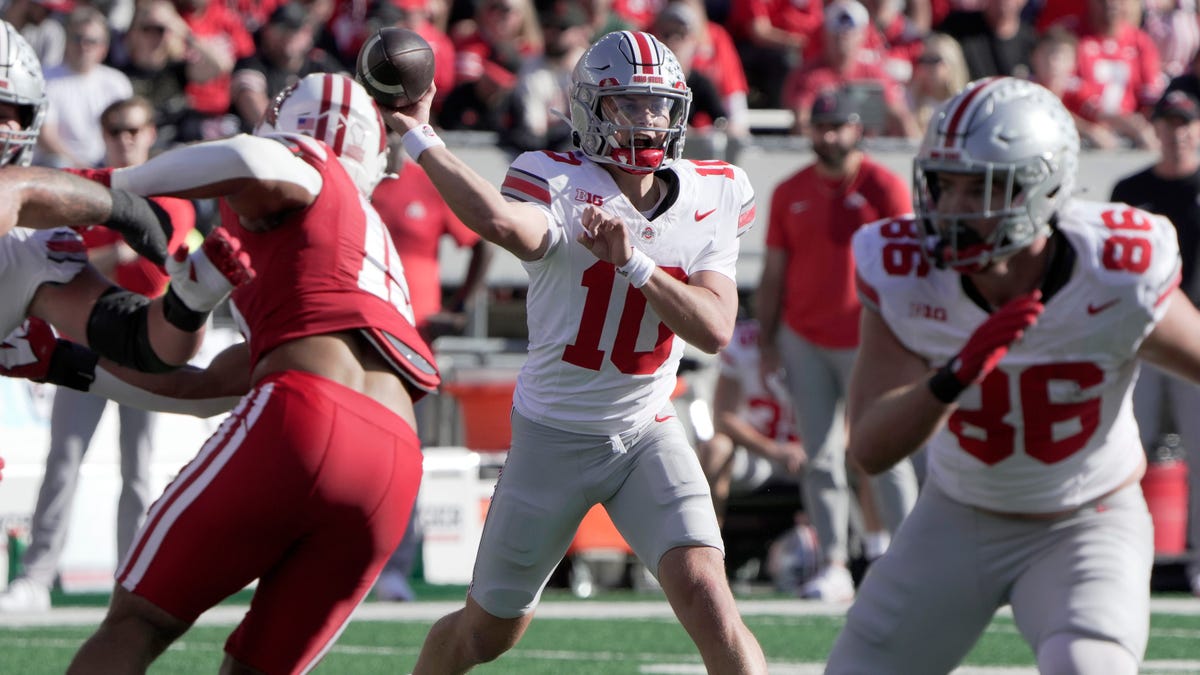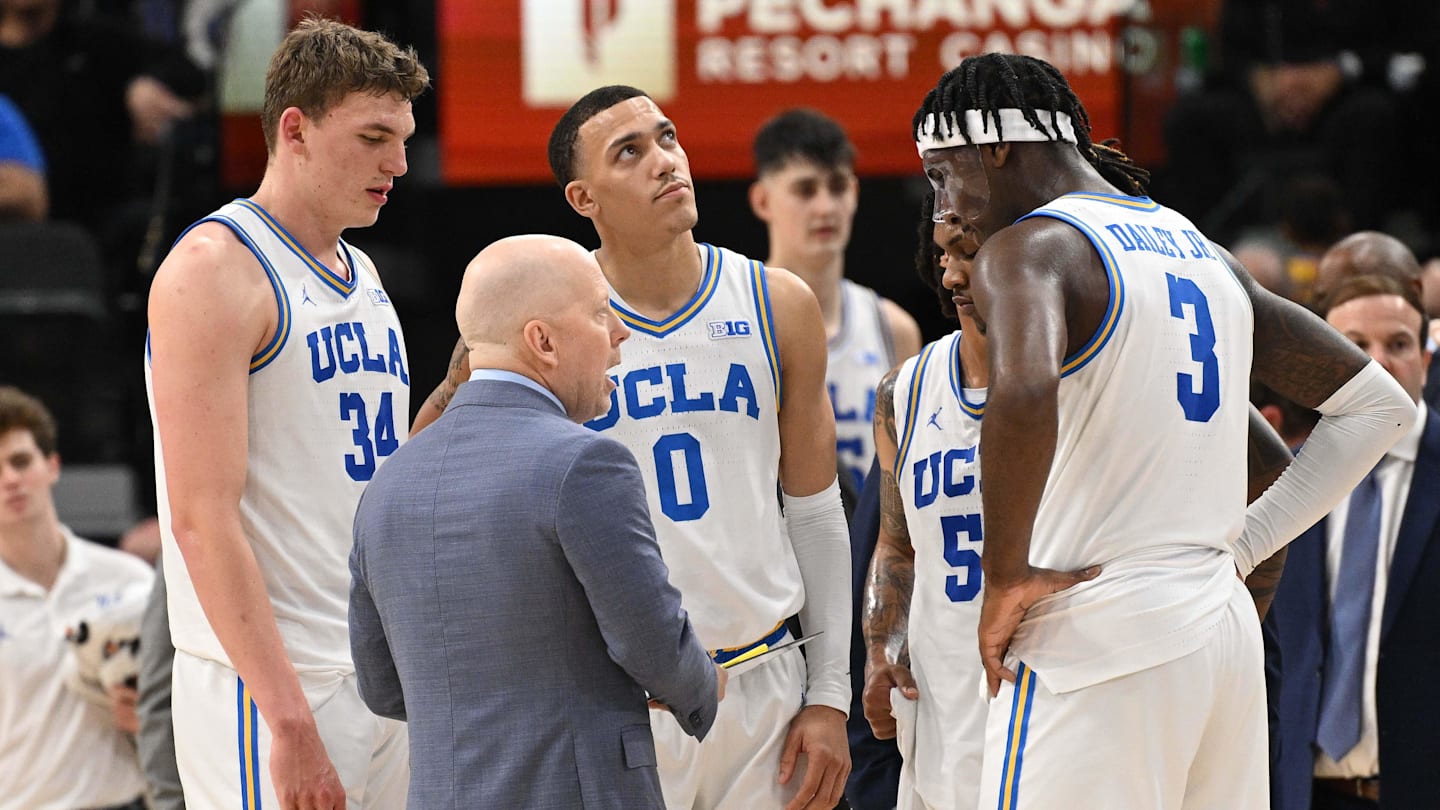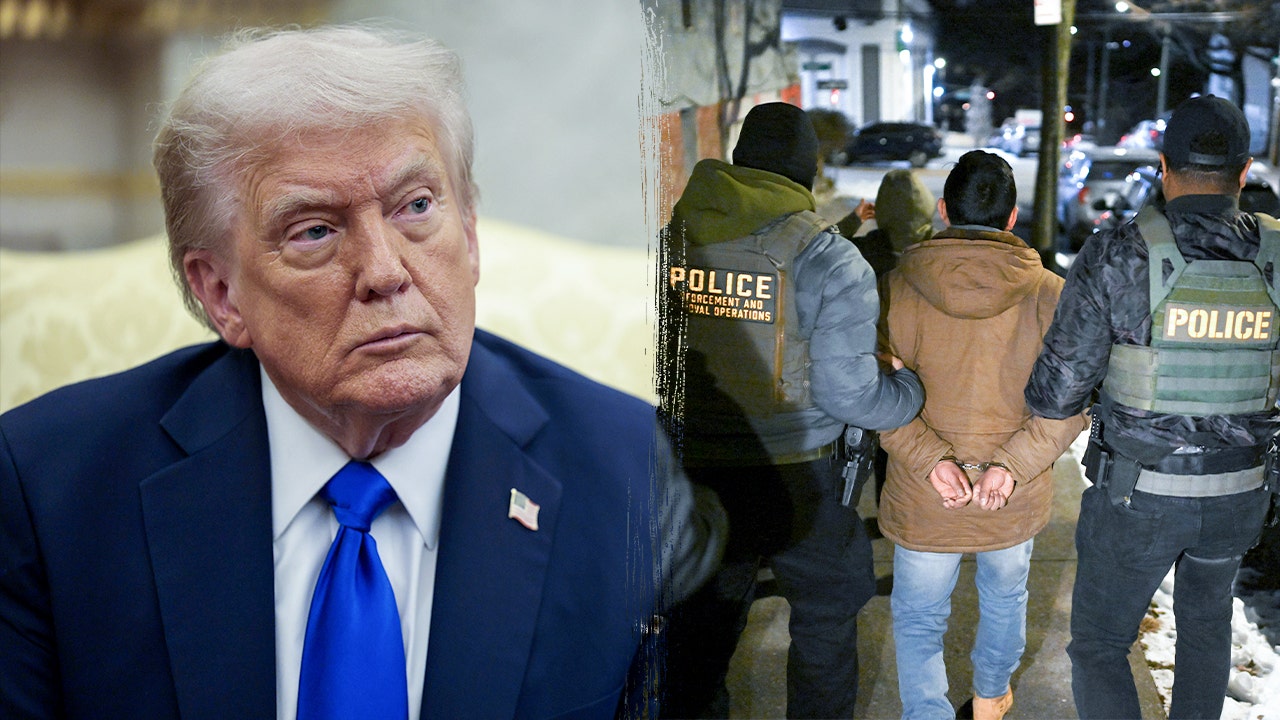Business
Netflix’s Reed Hastings Gives $50 Million to Bowdoin for A.I. Program

The Netflix co-founder Reed Hastings wants more researchers and students to ask deep questions about artificial intelligence and its potential to upend human norms.
To that end, Mr. Hastings has donated $50 million to Bowdoin College, his alma mater, to create a research initiative on “A.I. and Humanity” — the largest gift to the liberal arts college in Maine since its founding in 1794, the school announced on Monday.
The aim of the program, Mr. Hastings and school officials said, is to make Bowdoin a mecca for studying the risks and consequences of A.I. The initiative also aims to help prepare students to grapple with emerging technologies that can manufacture humanlike texts and even produce formulas for potential new drug compounds.
The idea for the program grew out of discussions over the last few months between Mr. Hastings and Bowdoin’s president, Safa R. Zaki, a cognitive scientist, they said. Bowdoin plans to use part of the money to hire 10 faculty members and to support professors “who want to incorporate and interrogate A.I.” in their teaching and research.
In an interview, Mr. Hastings said it was urgent for more researchers to tackle such questions because of the speed of A.I. advances and the significant disruptions the systems could bring to human endeavors like work and relationships.
“We’re going to be fighting for the survival of humanity and the flourishing of humanity,” Mr. Hastings said. He compared A.I. to social networks, noting that social networking had grown so fast that few people initially understood the changes it might bring to human interactions and behavior.
“The A.I. change, I think, will be much bigger than the social networking change,” Mr. Hastings added. “So it’s important to get started early before we’re overwhelmed by the problems.”
Dr. Zaki said she hoped Bowdoin faculty members and students would study fundamental questions about A.I. and come up with ethical frameworks for their use.
“What does it mean to have a technology that consumes so much power? What does it mean to have a technology that may widen inequities in society?” Dr. Zaki asked. “We have a moral imperative, as educators, to take this on, to confront A.I.”
Hundreds of millions of people have begun using A.I. for tasks like finding information, producing emails and generating computer code. Developers of such tools say even more powerful A.I. systems are poised to radically alter daily life.
Some prominent Silicon Valley leaders have promoted rosy visions of an A.I.-driven future.
The new initiative at Bowdoin, where Mr. Hastings received a bachelor’s degree in 1983, is aimed at more concretely studying how A.I. might alter society, for better or for worse. Mr. Hastings said he hoped the new program would also help ensure that the technology’s development served and benefited people.
“I’m an extreme techno-optimist and view most of human progress as technology progress on one side and moral-ethical systems on the other side,” he said. “The tech progress is moving ahead very nicely. Our moral-ethical system improvements need some bolstering.”

Business
Waymo killed KitKat. California neighborhood mourns a corner-store cat

San Francisco has been mourning the death of KitKat, a beloved corner-store cat who died after being struck by a Waymo robotaxi last week.
KitKat graced the counters of Randa’s Market on 16th Street, near the historic Roxie Theater in the Mission District. KitKat was first introduced on the store’s Instagram page six years ago, quickly winning over the hearts of customers. He wasn’t a surly or suspicious cat — he could be seen playing with someone’s dangling hoodie drawstrings; snoozing in front of shelves with liquor bottles; inside a cardboard box marked with his name; greeting the neighborhood dogs; even dressing up as Santa Claus.
He shot to fame during the COVID-19 pandemic’s first year. Not only was he posted on the @bodegacatsofinstagram account (which now has more than 500,000 followers), but he also won a mention in a news story on beloved store cats. “The atmosphere in the store definitely changed after KitKat arrived,” Daniel Zeidan, the store owner’s son, told SFGate. Not only did he get treats from customers, but also “someone recently brought him a blanket so he would stay warm in the winter.”
More recently, he was caught curled up asleep on his own heating pad.
He even made appearances in the next-door bar, Dalva, where his arrival felt like “the president had arrived, making their rounds, shaking hands and charming everyone,” said one mourning Instagram commenter.
But he was fatally wounded around 11:40 p.m. on Oct. 27 just outside the market, Mission Local reported. Two witnesses, speaking anonymously, told the news outlet that they had just left Dalva and saw KitKat sitting in front of a stopped self-driving Waymo for about seven seconds. Then the cat walked under the vehicle, heading toward the sidewalk, as the car pulled away. The right rear tire ran over KitKat, the website said.
“It was an awful sight,” one of the witnesses told Mission Local.
Another person driving by saw the Waymo swerve and told Mission Local he thought the robotaxi was driving faster than he would expect a human would drive on a busy street. “Killed the neighborhoods baby,” a comment on the city’s 311 website said shortly after the collision.
A bartender from another nearby bar, Delirium, rushed KitKat to a veterinarian hospital, where he was pronounced dead, according to Mission Local.
The cat was 9 years old, the San Francisco Standard reported.
“We’re heartbroken,” Randa’s Market said on Instagram. “He brought warmth, smiles, and comfort to everyone who walked through our doors…. The store won’t be the same without his little paws padding around.”
KitKat was a beloved presence along 16th Street in San Francisco.
(Randa’s Market)
One mourner, responding to the post, called KitKat “the best city bodega cat anyone could ever ask for. His lil pet requests meant a lot for some of us passing through, whether we missed our own pet or just wanted to share some love with a neighbor.”
In a statement, Waymo said: “We reviewed this, and while our vehicle was stopped to pick up passengers, a nearby cat darted under our vehicle as it was pulling away.
“We send our deepest sympathies to the cat’s owner and the community who knew and loved him, and we will be making a donation to a local animal rights organization in his honor,” the statement said. “The trust and safety of the communities we serve is our highest priority.”
A Waymo has had a run-in with a pet before. News outlets in 2023 reported on a Waymo striking and killing a small off-leash dog in San Francisco’s Bayview-Hunters Point neighborhood; in that case, a test driver was in the vehicle, but the car was in self-driving mode.
In one close call, a Waymo narrowly avoided running over a runaway dog in Santa Monica in May. An 8-year-old Labrador mix, Trevor, had escaped his owner’s yard and ran into the street in front of a Waymo, which braked suddenly, KCAL-TV reported. The station broadcast video of the near-collision. The dog was uninjured, and his owner praised the car’s quick action.
The California Department of Motor Vehicles has received reports of 884 collisions involving autonomous vehicles dating to 2014.

A Waymo robotaxi in downtown Los Angeles in September.
(Gary Coronado/For The Times)
Waymo, owned by Google’s parent, Alphabet, has been expanding its footprint across California. The robotaxis — electric Jaguar I-Paces — don’t use a human driver and can be hailed on an app in San Francisco and a swath of northern San Mateo County, including Daly City, San Bruno and Burlingame. They’re also available in parts of Silicon Valley and surrounding areas, including Mountain View, Los Altos, Palo Alto and Menlo Park.
In Los Angeles County, Waymos can be hailed across a portion of central L.A., South L.A., and the Westside, including downtown L.A., Santa Monica, Beverly Hills, West Hollywood and Inglewood.
The self-driving cars are also available in Phoenix.
Business
Inside the race to train AI robots how to act human in the real world

CHENNAI, India — Now that artificial intelligence has mastered almost everything we do online, it needs help learning how we physically move around in the real world.
A growing global army of trainers is helping it escape our computers and enter our living rooms, offices and factories by teaching it how we move.
In an industrial town in southern India, Naveen Kumar, 28, stands at his desk and starts his job for the day: folding hand towels hundreds of times, as precisely as possible.
He doesn’t work at a hotel; he works for a startup that creates physical data used to train AI.
A robot practices for the 100-meter race before the opening ceremony of the World Humanoid Robot Games in Beijing in August.
(Ng Han Guan / Associated Press)
He mounts a GoPro camera to his forehead and follows a regimented list of hand movements to capture exact point-of-view footage of how a human folds.
That day, he had to pick up each towel from a basket on the right side of his desk, using only his right hand, shake the towel straight using both hands, then fold it neatly three times. Then he had to put each folded towel in the left corner of the desk.
If it takes more than a minute or he misses any steps, he has to start over.
His firm, a data labeling company called Objectways, sent 200 towel-folding videos to its client in the United States. The company has more than 2,000 employees; about half of them label sensor data from autonomous cars and robotics, and the rest work on generative AI.
Most of them are engineers, and few are well-practiced in folding towels, so they take turns doing the physical labor.
“Sometimes we have to delete nearly 150 or 200 videos because of silly errors in how we’re folding or placing items,” said Kumar, an engineering graduate who has worked at Objectways for six years.
The carefully choreographed movements are to capture all the nuances of what humans do — arm reaching, fingers gripping, fabric sliding — to fold clothes.
The captured videos are then annotated by Kumar and his team. They draw boxes around the different parts of the video, tag the towels, and label whether the arm moved left or right, and classify each gesture.
Kumar and his colleagues in the town of Karur, which is about 300 miles south of Bengaluru, are an unlikely batch of tutors for the next generation of AI-powered robots.
“Companies are building foundation models fit for the physical world,” said Ulrik Stig Hansen, co-founder of Encord, a data management platform in San Francisco that contracts with Objectways to collect human demonstration data. “There’s this huge resurgence in robotics.”
Encord works with robotics companies such as Jeff Bezos-backed Physical Intelligence and Dyna Robotics.
Tesla, Boston Dynamics and Nvidia are among the leaders in the U.S. in the race to develop the next generation of robots. Tesla already uses its Optimus robots — which seem to be often remotely controlled — for different company events. Google has its own AI models for robotics. OpenAI is beefing up its robotics ambitions.
Nvidia projects the humanoid robot market could reach $38 billion over the next decade.
There are also many lesser-known companies trying to provide the hardware, software and data to make a mass-produced, multitasking humanoid robot a reality.

Robots are displayed at Nvidia’s booth during the China International Supply Chain Expo in Beijing in July.
(Mahesh Kumar A. / Associated Press)
Large language models that power chatbots such as ChatGPT have mastered using language, images, music, coding and other skills by hoovering up everything online. They use the entire internet to figure out how things are connected and mimic how we do things, such as answering questions and creating photo-realistic videos.
Data on how the physical world works — how much force is required to fold a napkin, for example — is harder to get and translate into something AI can use.
As robotics improves and combines with AI that knows how to move in the physical world, it could bring more robots into the workplace and the home. While many fear this could lead to job losses and unemployment, optimists think advanced robots would free up humans from tedious work, lower labor costs and eventually give people more time to relax or focus on more interesting and important work.
Many companies have entered the fray as shovel sellers in the AI gold rush, seeing an opportunity to gather data for what is being called physical AI.
One group of companies is teaching AI how to act in the real world by having humans guide robots remotely.
Ali Ansari, founder of San Francisco-based Micro1, said emerging robotics data collection increasingly focuses on teleoperations. Humans with controllers make the robot do something like picking up a cup or making tea. The AI is fed videos of successful and failed attempts at doing something and learns to do it.
The remote-control training can happen in the same room as the robots or with the controller in a different country. Encord’s Hansen said that there are warehouses planned in Eastern Europe where large teams of operators will sit with joysticks, guiding robots across the world.
There are more of these, what some have dubbed “arm farms,” popping up as demand increases, said Mohammad Musa, founder of Deepen AI, a data annotation firm headquartered in California.
“Today, a mix of real and synthetic data is being used, gathered from human demonstrations, teleoperation sessions and staged environments,” he said. “Much of this work still occurs outside the West, but automation and simulation are reducing that dependency over time.”
Some have criticized teleoperated humanoids for being more sizzle than substance. They can be impressive when others are controlling them, but still far from fully autonomous.
Ansari’s Micro1 also does something called human data capture. It pays people to wear smart glasses that capture everyday actions. It is doing this in Brazil, Argentina, India, and the United States.
San José-based Figure AI, partnered with real estate giant Brookfield to capture footage from inside 100,000 homes. It will collect data about human movement to teach humanoid robots how to move in human spaces. The company said it will spend much of the $1 billion it raised to collect first-person human data.
Meta-backed Scale AI, has collected 100,000 hours of similar training footage for robotics through its prototype laboratory set up in San Francisco.
Still, training bots isn’t always easy.
Twenty-year-old Dev Mandal created a company in Bengaluru, hoping to cash in on the need for physical data to train AI. He offered India’s inexpensive labor to capture movements. After advertising his services, he got requests to help train a robotic arm to cook food as well as a robot to plug and unplug cables in data centers.
But he had to give up the business, as potential clients needed the physical movement data collected in a very specific manner, making it tougher for him to make money, even with India’s inexpensive labor. Clients wanted an exact robot arm, for example, using a certain kind of table with purple lights to be used.
“Everything, down to the color of the table, had to be specified by them,” he said. “And they said that this has to be the exact color.”
Still, there’s lots of work for the towel folders of Karur.
Their boss, Objectways founder Ravi Shankar, says that in recent months, his firm has captured and annotated footage of robotic arms folding cardboard boxes and T-shirts and picking out certain colored objects on a table.
It recently started annotating videos from more advanced humanoid robots, helping train them to sort and fold a mix of towels and clothes, folding them and placing them in different corners of the table. His team had to annotate 15,000 videos of the robots doing the jobs.
“Sometimes the robot’s arms throw the clothes and won’t fold properly. Sometimes it scatters the stack,” but the robots are learning quickly said Kavin, 27, an Objectways employee who goes by one name. “In five or 10 years, they’ll be able to do all the jobs and there will be none left for us.”
Business
‘Our stomping ground’: Demolition of historic Valley Plaza mall begins

David Udoff fondly remembers how his mother would drive him and his brother to Valley Plaza in her avocado Dodge Dart.
The family would shop at the once-vibrant and bustling selection of retail businesses. They would visit the Sears, a bakery and the animatronic fortune-telling machine in front of the drugstore. Then they would lunch on Salisbury steak and Jell-O platters at Schaber’s Cafeteria.
“The good old Valley days,” the 67-year-old former North Hollywood and Toluca Lake resident said of his family outings in the 1960s.
Now, swaths of the historic San Fernando Valley mall are being demolished after years of complaints from neighbors that the collection of vacant buildings and parking lots had fallen into disrepair.
The Valley Plaza, which opened in 1951, was among the first and largest open-air shopping malls on the West Coast and a major center of commerce.
In its heyday, the sprawling complex of suburban buildings and modernist high-rises drew crowds and even a visit from John F. Kennedy during his 1960 presidential campaign.
The demolition, which began this week, came after a panel of Los Angeles city commissioners appointed by Mayor Karen Bass voted in August to declare much of the site a public nuisance.
The vote greenlighted the destruction of six buildings in the plaza. Some structures deemed historic, including the iconic 12-story, 165-foot-tall tower — among the first skyscrapers built in L.A. — will be spared.
“It’s crazy that it’s happening. It has been an eyesore in the Valley for so long,” said Stuart Waldman, president of the Valley Industry and Commerce Assn. “We’re excited we are going to have something built there that will be usable.”
The site had drawn squatters, and nearby homeowners voiced concerns about crime and potential fires.
Waldman, who lives nearby, said watching the mall’s deterioration “has been sad.”
He said he expects the property will be turned into a mixed-use commercial and residential space, as was done in the development of NoHo West, which repurposed the site of the former Laurel Plaza mall and a Macy’s department store.
But Waldman warned it could be an uphill battle.
“It’s hard to build in L.A. It is expensive, and the city makes it difficult,” Waldman said. “I hope someone’s going to take a chance. It’s an opportunity to help the community while also making a profit.”
The influential regional shopping center was an early example of how building entrances were reoriented to face large rear parking lots instead of streets and sidewalks, emphasizing vehicle access from newly built freeways, according to the Los Angeles Conservancy.
“This was our stomping ground,” Jack McGrath, a former president of the Studio City Chamber of Commerce, said in a video series on Valley Plaza published by the news outlet Patch in 2013.
McGrath, in the video, described how thousands of people crowded into the mall’s sprawling parking lot to see Kennedy speak.
“This man was absolutely handsome, and more importantly, he had the best-looking tan I’ve ever seen on a man or a politician,” McGrath said. “The women were goofy, looking at this fellow.”
The shopping center’s decline began with the rise of big-box retail, as well as competition from other newer malls in Burbank and Sherman Oaks. Economic strife in the 1990s and damage from the 1994 Northridge earthquake also dealt blows, pushing some businesses to permanently close.
In 2000, about 30% of the mall’s storefronts were vacant, and in recent years film and television producers have used the site as a grimy, boarded-up backdrop — rather than an iconic institution once showcased in the music video for Randy Newman’s 1983 anthem, “I Love L.A.”
On Thursday, piles of dirt, concrete shards and other debris surrounded the property, with a bulldozer watching over.
Fred Gaines, an attorney for Charles Co., the real estate and development firm that owns the property, and which engaged the demolition contractor, said there was not yet a specific redevelopment plan for the site. He said future development would depend on how the city handles homelessness encampments in the area.
“We certainly will look to the city to fix this problem in the neighborhood and allow this to be a viable development site,” Gaines said.
Charles Co. has had its own problems in recent years, as one of the firm’s owners became embroiled in a major L.A. corruption case. Co-owner Arman Gabaee was sentenced in 2022 to four years in federal prison after making payments to a county official in return for leases and nonpublic information.
Udoff, the former Valley resident who currently lives in South Florida, said he tried to move back to L.A. a few years ago, but housing was too expensive. As prices rise in the Miami-area suburb where he lives, he is looking to resettle in a more affordable area in California or Oregon.
In August, he wrote a letter to Bass’ office urging the city to help steer development of the property into a cultural center or subsidized affordable housing.
“How things change,” Udoff said. “They should make it into something really nice.”
Times staff photographer Eric Thayer contributed to this report.
-

 Milwaukee, WI6 days ago
Milwaukee, WI6 days agoLongtime anchor Shannon Sims is leaving Milwaukee’s WTMJ-TV (Channel 4)
-

 News6 days ago
News6 days agoWith food stamps set to dry up Nov. 1, SNAP recipients say they fear what’s next
-
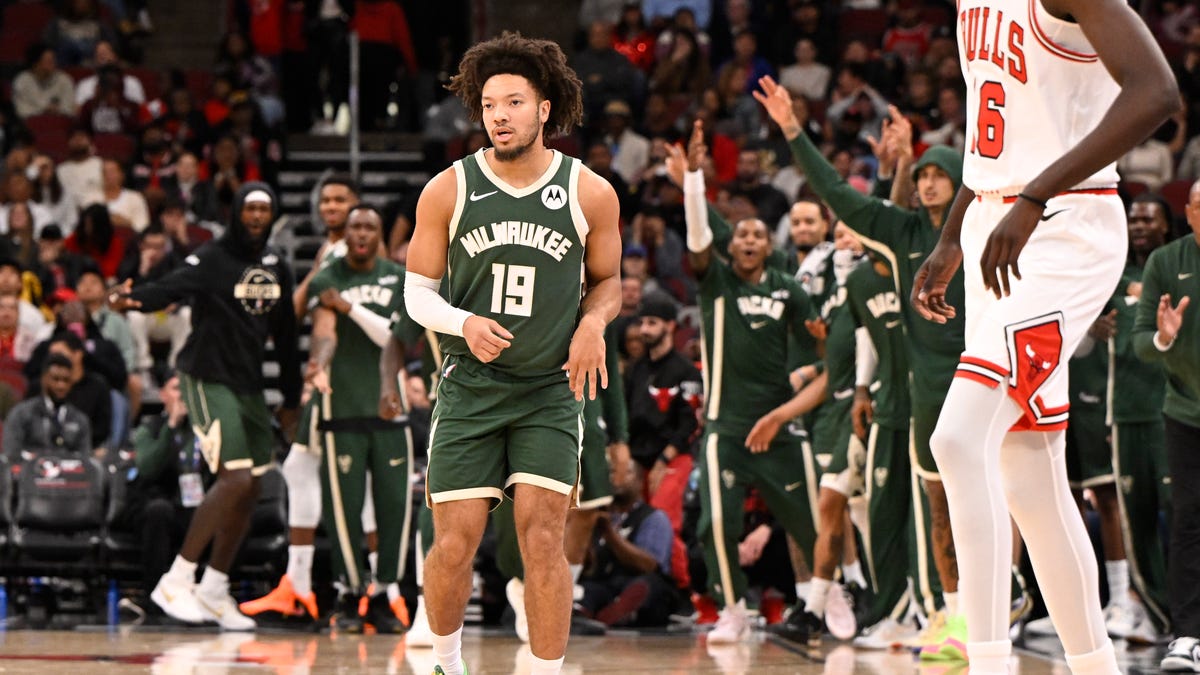
 Alabama1 week ago
Alabama1 week agoHow did former Alabama basketball star Mark Sears do in NBA debut with Milwaukee Bucks?
-

 News1 week ago
News1 week ago1 dead, 6 injured in shooting at Lincoln University homecoming festivities
-

 Austin, TX1 week ago
Austin, TX1 week agoDia De Los Muertos Austin: Parades, Altars & Events
-
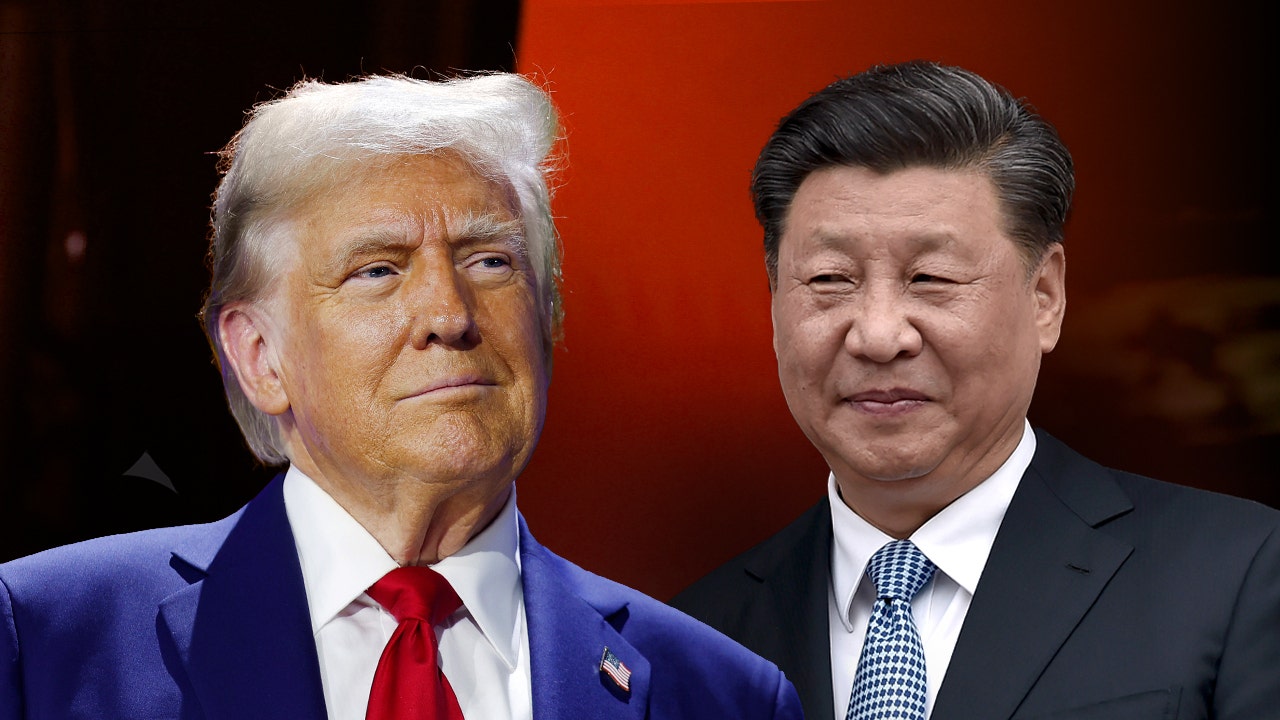
 Politics1 week ago
Politics1 week agoTrump to jet off to Asia as North Korea fires ballistic missiles and China trade questions loom
-

 Seattle, WA6 days ago
Seattle, WA6 days agoFOX 13’s Aaron Levine wins back-to-back Jeopardy! episodes
-

 Culture5 days ago
Culture5 days agoVideo: Dissecting Three Stephen King Adaptations





